Billed as one of Asia's biggest book fairs, the 16th Taipei International Book Exhibition (TIBE, 第十六屆台北國際書展) opens its doors to the public today. Activities in Exhibition Hall One were restricted to industry professionals yesterday.
While many of the participants will have a serious purpose for attending the event - it's a major forum for copyright negotiations - there's plenty to enjoy for the average reader. The country in focus this year is Australia, which will be showing off its multicultural and youthful outlook on the world. The dominating presence of Tony and Maureen Wheeler, the founders of the Lonely Planet series, segues the focus on Australia into another theme, also multicultural and youthful: travel.
Given the heavy intellectual atmosphere of last year's Russian national theme, this year's fair is certainly more accessible, though, as Australians are quick to point out, they are hardly lightweights in the intellectual literary stakes. (Oz boasts only one Nobel Laureate in literature in the shape of Patrick White, but Peter Carey and JM Coetzee - a naturalized Australian - are among those tipped for the future recipients of the accolade). Be that as it may, the mood of the Australian presence is young and international, with design accorded as much importance as the written word.
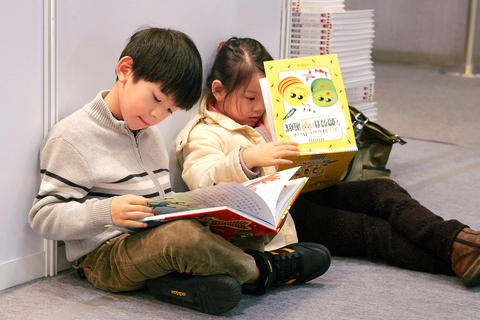
One of the stars of the Australian delegation is Shaun Tan (陳志勇), whose graphic novels have won numerous awards. A display of manuscript drawings of his work is on display in the Australian Pavilion.
The Travel Literature Pavilion is a first for the TIBE. Combining travel with literature, the pavilion takes traveling to a new level through exhibits such as the Click! Taiwan gallery and the Box Fun on Traveling art installation created with contributions from TIBE spokesman A-hsin (阿信), vocalist for the band Mayday (五月天), as well as over 20 local Taiwanese authors and travel writers.
Exciting illustrations and photographs from the Etonnants Voyageurs Festival, which is dedicated to travel literature and held each year in Saint-Malo, a resort town in northern France, adds to the mood of wanderlust. Michel Le Bris, the festival's founder, and Gilles Lapouge, travel writer and producer of the well-known French TV reading program Apostrophes, share their travel tales at the fair.
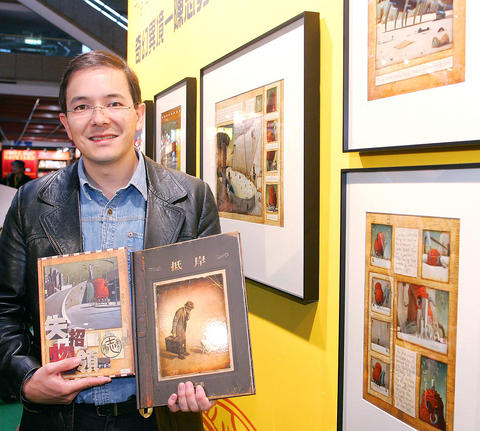
For those who want to judge a book by its cover, there's no better place to visit than the Most Beautiful Book Design Pavilion, which features winners from the Best Book Design from All Over the World award offered by the Stiftung Buchkunst (Book Art Foundation) in Germany. It also features the works of Japanese book designer Sugiura Kohei, acclaimed as the "Giant of Japanese Design," works selected for the Best of Asian Design by Lu Jingren (呂敬人), and winners of the Golden Butterfly Award - Taiwan's top book design prize. You don't even need to look inside; which is fortunate, for in most cases you can't.
Linden Lin (林載爵), chairman of the Taiwan Book Fair Foundation, was quick to point out that the book exhibition's activities extend beyond the limits of the Taipei World Trade Center (TWTC) exhibition halls. Now in its fourth year, the Reading Festival promotes reading in schools. This includes the Reading Learning Handbook program, which is organized in conjunction with Taipei Municipal libraries and produces reading guides that encourage students to access libraries and TIBE resources.
Last year, the TIBE organized a Reading Train that took students from remote parts of Ilan directly to Taipei for the exhibition. Today, the train will transport over 200 students from remote regions and Aboriginal communities in Hsinchu County to the TIBE.
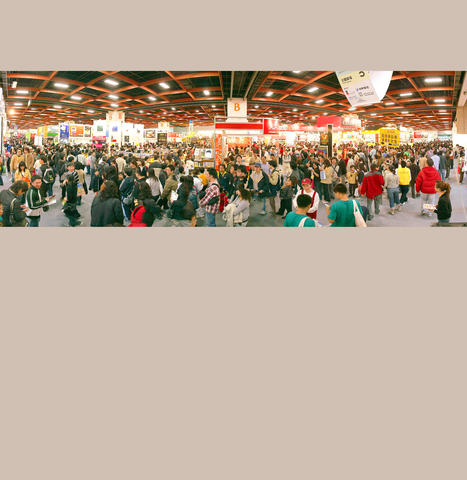
"There really isn't much point if the activity is only restricted to Taipei residents," Lin said at a press conference held to launch TIBE.
The Anime & Comics Pavilion and the Fantasy Pavilion are also aimed at bringing children back into the world of books through the presence of artists and a chance to enjoy the Computer Graphics Experience Zone.
Event information:
TIBE 2008 will be taking over all three exhibition halls of the TWTC until Monday.
Opening hours: 10am to 6pm, extended to 10pm on Friday and Saturday and 8pm on Sunday
Tickets: NT$100 for adults, NT$80 concessions. An event pass valid for the whole six days is NT$180 for adults, NT$150 concessions
On the Net: Detailed schedules of daily events can be found at TIBE's Web site at www.tibe.org.tw/2008/
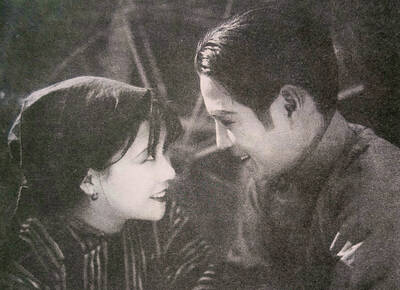
March 10 to March 16 Although it failed to become popular, March of the Black Cats (烏貓進行曲) was the first Taiwanese record to have “pop song” printed on the label. Released in March 1929 under Eagle Records, a subsidiary of the Japanese-owned Columbia Records, the Hoklo (commonly known as Taiwanese) lyrics followed the traditional seven characters per verse of Taiwanese opera, but the instrumentation was Western, performed by Eagle’s in-house orchestra. The singer was entertainer Chiu-chan (秋蟾). In fact, a cover of a Xiamen folk song by Chiu-chan released around the same time, Plum Widow Missing Her Husband (雪梅思君), enjoyed more
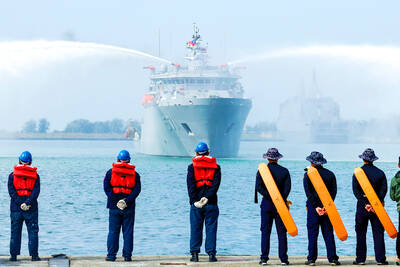
Last week Elbridge Colby, US President Donald Trump’s nominee for under secretary of defense for policy, a key advisory position, said in his Senate confirmation hearing that Taiwan defense spending should be 10 percent of GDP “at least something in that ballpark, really focused on their defense.” He added: “So we need to properly incentivize them.” Much commentary focused on the 10 percent figure, and rightly so. Colby is not wrong in one respect — Taiwan does need to spend more. But the steady escalation in the proportion of GDP from 3 percent to 5 percent to 10 percent that advocates

From insomniacs to party-goers, doting couples, tired paramedics and Johannesburg’s golden youth, The Pantry, a petrol station doubling as a gourmet deli, has become unmissable on the nightlife scene of South Africa’s biggest city. Open 24 hours a day, the establishment which opened three years ago is a haven for revelers looking for a midnight snack to sober up after the bars and nightclubs close at 2am or 5am. “Believe me, we see it all here,” sighs a cashier. Before the curtains open on Johannesburg’s infamous party scene, the evening gets off to a gentle start. On a Friday at around 6pm,
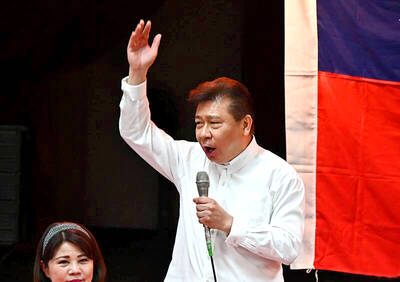
A series of dramatic news items dropped last month that shed light on Chinese Communist Party (CCP) attitudes towards three candidates for last year’s presidential election: Taiwan People’s Party (TPP) founder Ko Wen-je (柯文哲), Terry Gou (郭台銘), founder of Hon Hai Precision Industry Co (鴻海精密), also known as Foxconn Technology Group (富士康科技集團), and New Taipei City Mayor Hou You-yi (侯友宜) of the Chinese Nationalist Party (KMT). It also revealed deep blue support for Ko and Gou from inside the KMT, how they interacted with the CCP and alleged election interference involving NT$100 million (US$3.05 million) or more raised by the